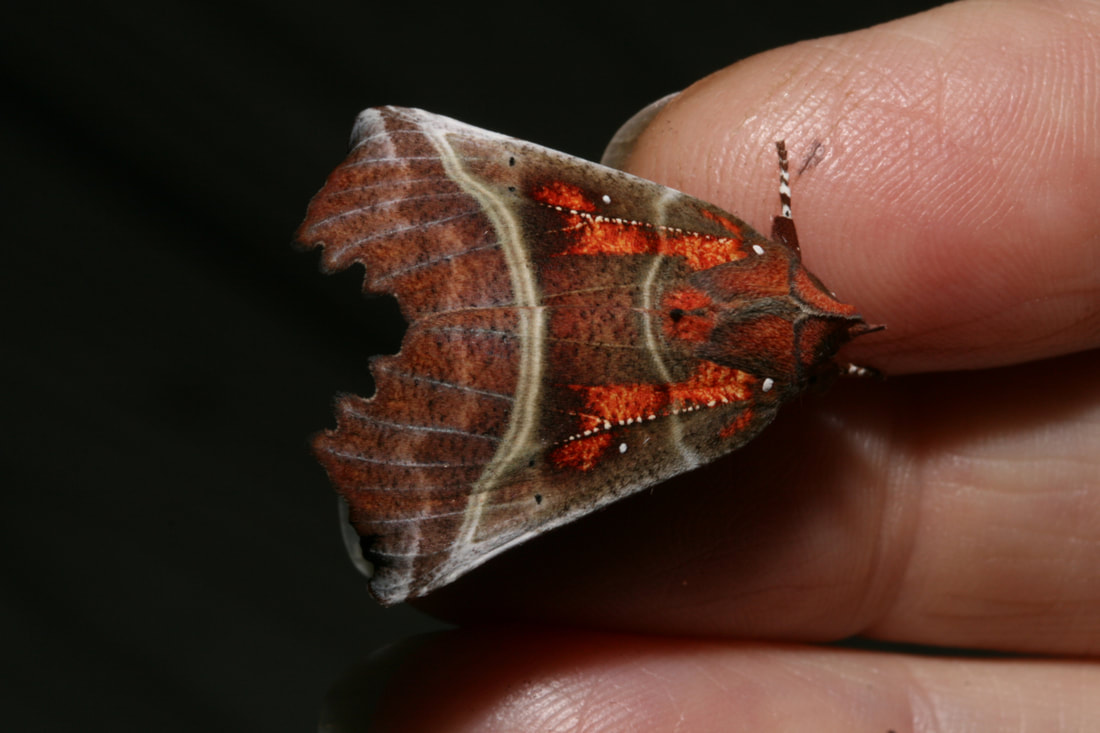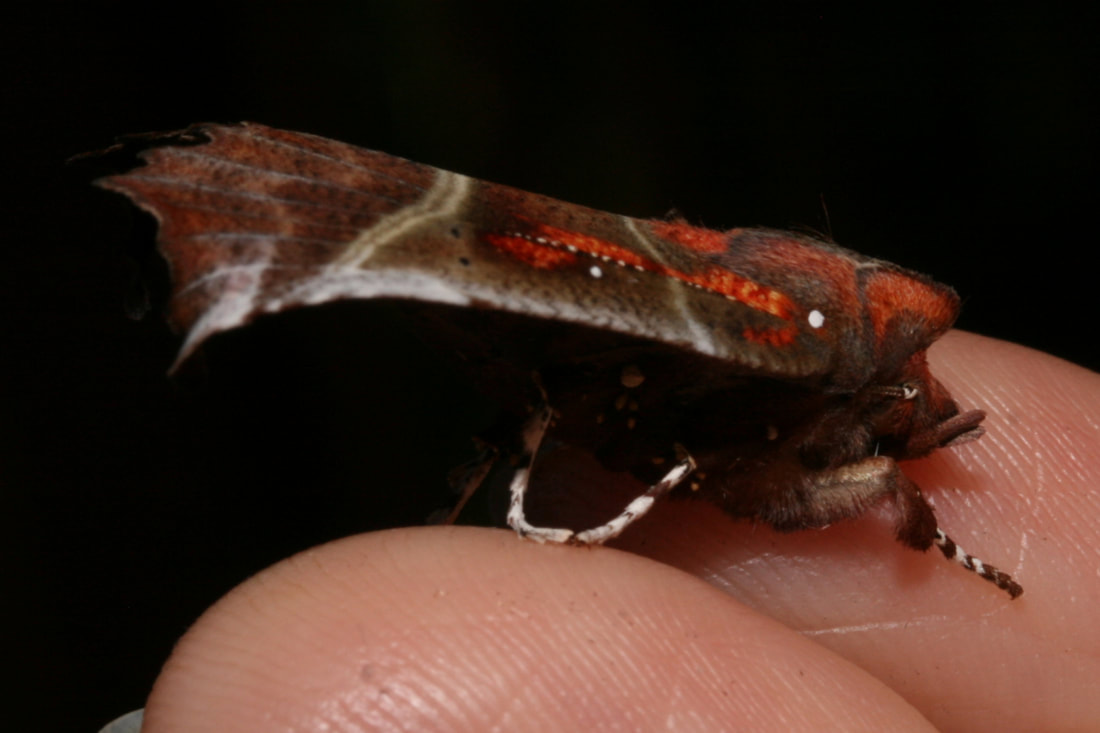by Willy DeSmet
Inspired by Melissa Fey, my wife Phyllis started raising Monarch butterflies from eggs and caterpillars we found in the yard. Going around in the garden we came across other caterpillars, including some of the Red Spotted Purple butterfly (which she has already raised to butterflies and released). She asked me what a rather non-descript green caterpillar would turn into. I didn't know but answered if she wanted to know, she could raise it and see what it turned into. She did. She put it in a ventilated box with some of the leaves it was on and changed the leaves for fresh ones every couple of days.
One day she let out a surprised yell. She said she thought she saw a dead and withered leaf in the box and reached in to replace it with a fresh one. It moved! The caterpillar had pupated and hatched into an adult moth. This is a moth, called The Herald, Scoliopteryx libatrix (Scolio: curved; pteryx: wing; libatrix: someone or something that pours.)
Some species of moths look a lot alike and are difficult (sometimes impossible) to tell apart just by looking at them. The color and pattern is quite unique in this moth The orange colored patches are described as "wide streaks of mottled orange." they remind me of glowing coals. it almost looks like there's a fire burning through the wings from below. maybe that's just my imagination.
Phyllis was fooled by the moth's camouflage pattern. Hanging among (wilted) leaves it really does blend in. It is a fairly common moth, but rarely noticed.
The caterpillar prefer poplar and willow. An interesting note is that this species overwinters as an adult, often in caves or in man-made structures like basements, barns and sheds.
Dated 12 September 2018


 RSS Feed
RSS Feed
